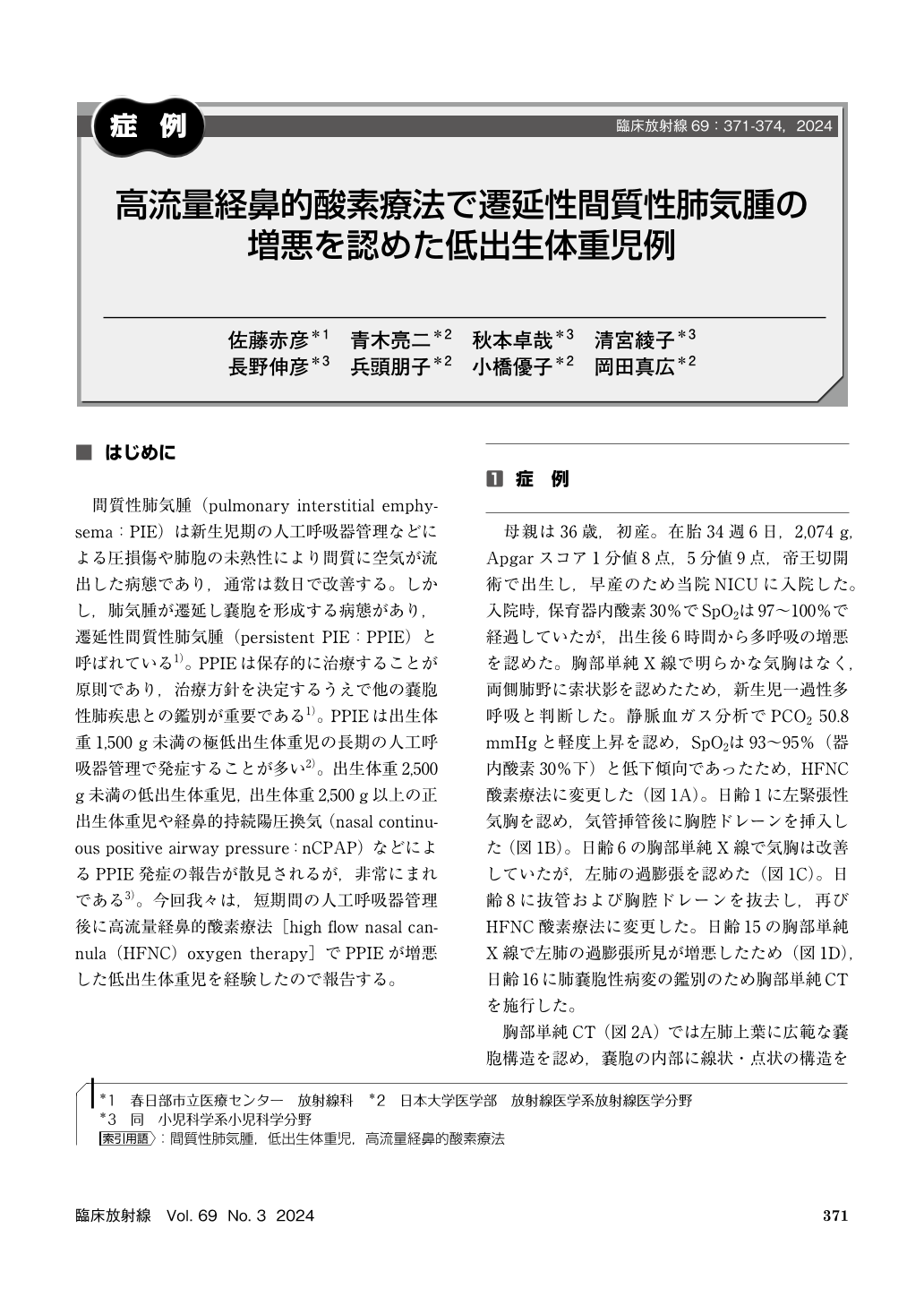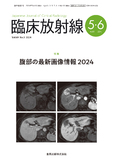Japanese
English
- 有料閲覧
- Abstract 文献概要
- 1ページ目 Look Inside
- 参考文献 Reference
間質性肺気腫(pulmonary interstitial emphysema:PIE)は新生児期の人工呼吸器管理などによる圧損傷や肺胞の未熟性により間質に空気が流出した病態であり,通常は数日で改善する。しかし,肺気腫が遷延し嚢胞を形成する病態があり,遷延性間質性肺気腫(persistent PIE:PPIE)と呼ばれている1)。PPIEは保存的に治療することが原則であり,治療方針を決定するうえで他の嚢胞性肺疾患との鑑別が重要である1)。PPIEは出生体重1,500g未満の極低出生体重児の長期の人工呼吸器管理で発症することが多い2)。出生体重2,500g未満の低出生体重児,出生体重2,500g以上の正出生体重児や経鼻的持続陽圧換気(nasal continuous positive airway pressure:nCPAP)などによるPPIE発症の報告が散見されるが,非常にまれである3)。今回我々は,短期間の人工呼吸器管理後に高流量経鼻的酸素療法[high flow nasal cannula(HFNC)oxygen therapy]でPPIEが増悪した低出生体重児を経験したので報告する。
Persistent pulmonary interstitial emphysema(PPIE)is often developed during mechanical ventilation for very–low–birth–weight infants. We report a late–preterm infant developed PPIE during high flow nasal cannula(HFNC). The female newborn was delivered at 34 weeks of gestation. She received HFNC after ventilator management of left pneumothorax for eight days. Chest CT performed at 16 days of age for left lung hyperinflation showed lines and dots within extensive cystic lesions, and the diagnosis of PPIE was made. PPIE was improved without surgical–operation. It is important to identify features of PPIE on chest CT even in infants with low risk for PPIE.

Copyright © 2024, KANEHARA SHUPPAN Co.LTD. All rights reserved.


